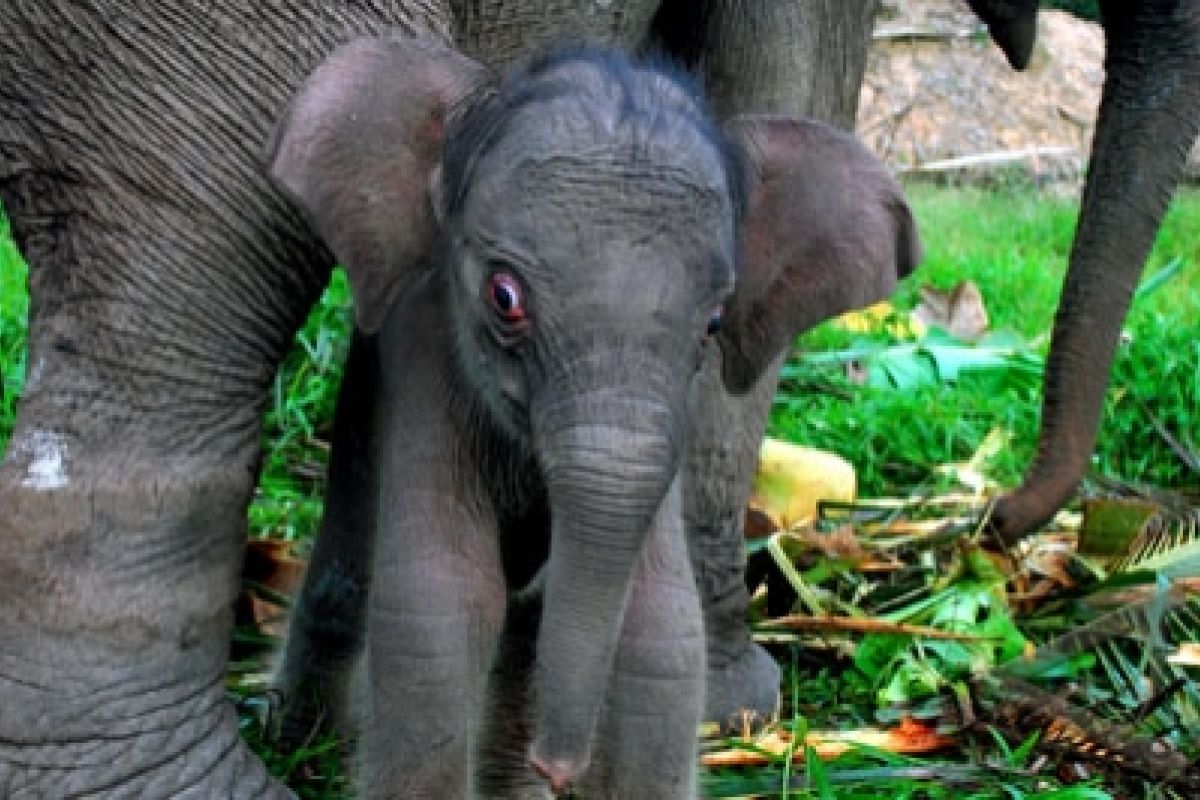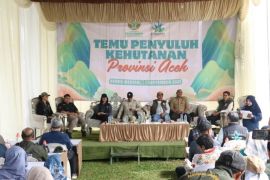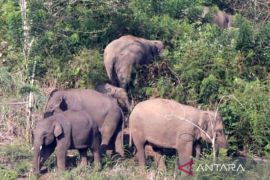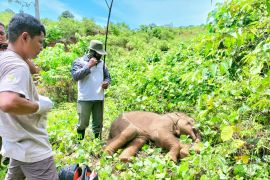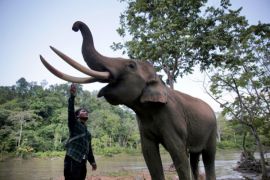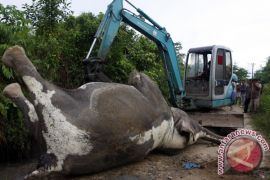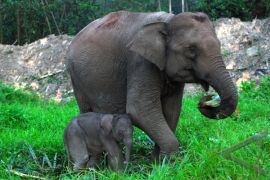Wild elephant habitats threatened by continuing encroachments were located in the Pasar Seblat area, North Bengkulu district, Amon Zamora, head of Bengklu`s Natural Resources Conservation Agency (BKSDA), said here Thursday.
The limited production forests that serve as the habitat of wild elephants were now hemmed in by commercial plantations and a residential area. In the east there was the plantation area of PT Agricinal, in the north, plantations of PT Alno and in the south Sukamerindu village.
In the west was the Lebong Kandis limited production forest which was projected to be a corridor but still inhabited by around 500 families.
In addition, a habitat of wild elephants was also to be found in the Pasar Seblat forest as well in the Elephant Training Center (PLG) area, which covers approximately 6,800 hectares.
If the two regions of the limited production forest and Seblat elephant training center were not made ​​a corridor forest to Kerinci Seblat National Park (TKNS) forest area, it was feared that in the next few years the human-elephant conflict will occur.
"We have proposed the forest status increasing of the elephant training center forest, from specialized production into nature reserve conservation and corridor forest areas," said Amon.
The forest area proposed to be upgraded reaches 18,503 hectares, consisting of 6,800 hectares of elephant training center region and the remaining of forest corridors to Kerinci Seblat National Park, he noted.
Meanwhile, the administrative head of conservation and natural resources agency, Supartono said, the area as a habitat for Sumatran elephants to be maintained by law, because if it was allowed to go, on the next few years these endangered animals would become extinct.
To overcome these problems the agency is trying to unite the Lebong Kandis region become a part of the Seblat elephant training center, in addition to increase the status to be natural tourism park with a function as wildlife conservation.
Besides that, the agency has proposed expanding Seblat elephant training center to the ministry of forestry from 6,800 hectares to around 18,305 hectares therefore it will make the protected wildlife`s cruise area lines increase.
"It should be one area of ​​roaming elephants require about 400 hectares, so that if the number of elephants in the area is 80, the land needed at least 32 thousand hectares," Supartono added.
The increasingly desperate elephant habitat due to illegal encroachment and expansion of plantations cause the level of conflict between humans and elephants continue to rise.
Supartono explained, the conflict between elephants and humans in 2007 and 2009 as many as 21 cases each year, while losses due to the conflict was estimated at 500 million more per year, namely the damage of huts, palm trees, rubber plantations as well as local people`s plantations.
(T.KR-LWA/HAJM/R013)
Editor: Priyambodo RH
Copyright © ANTARA 2011
